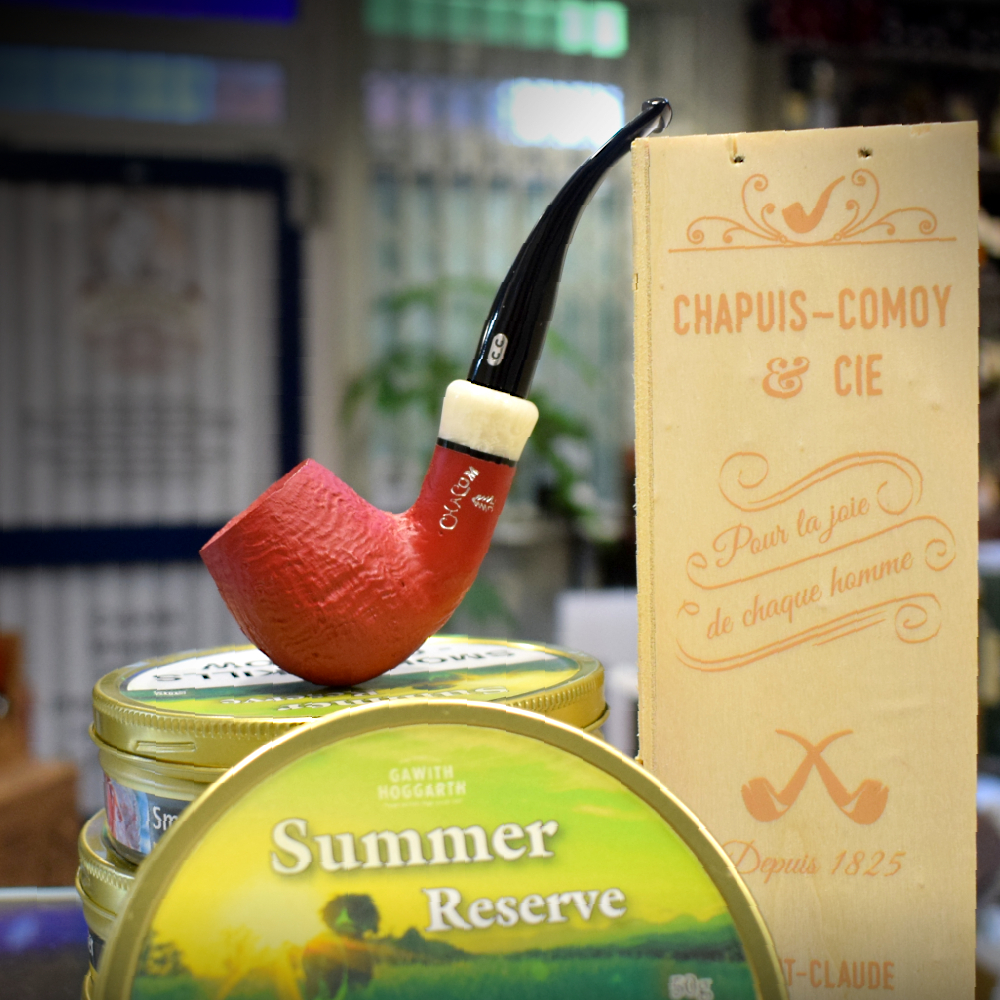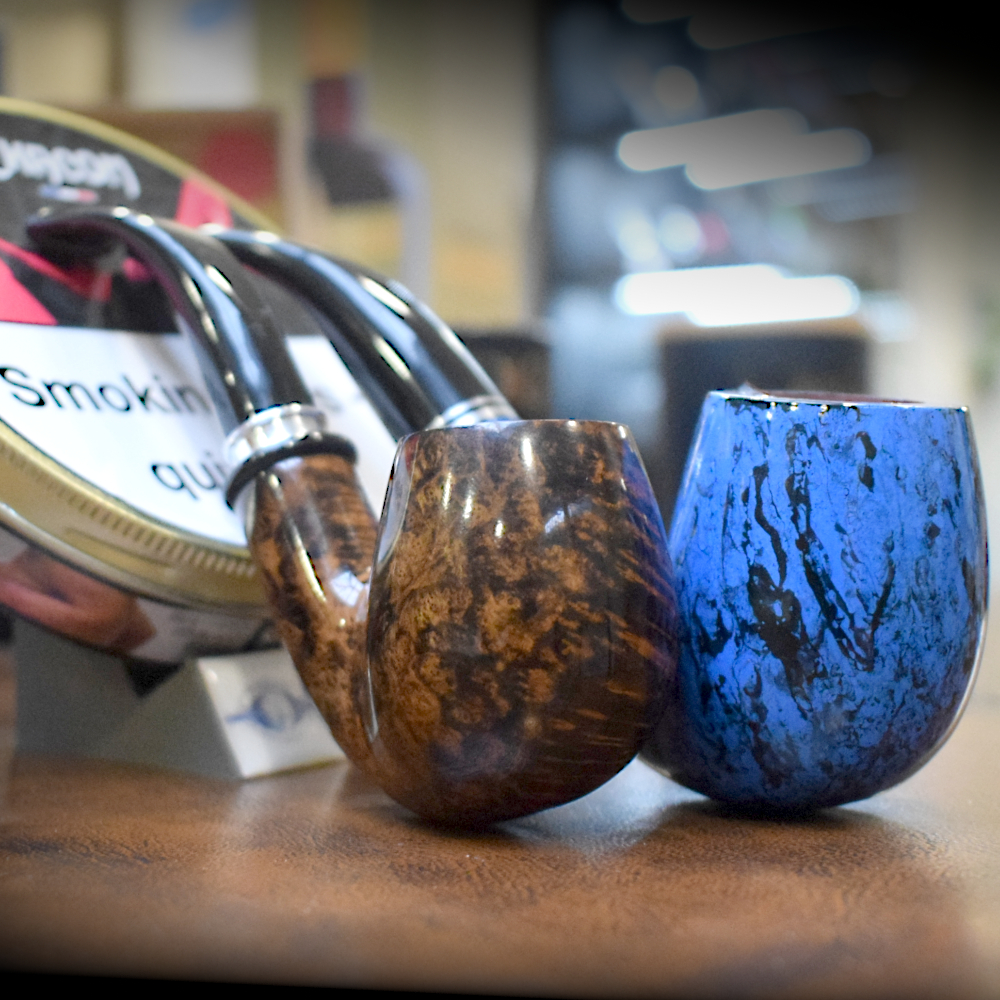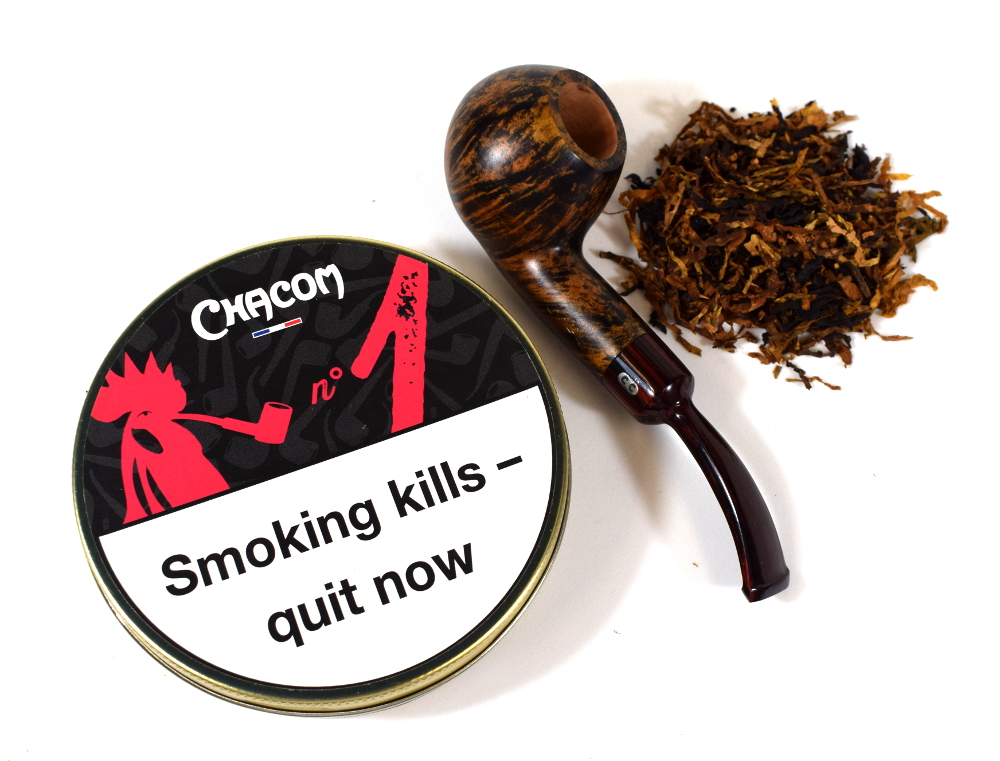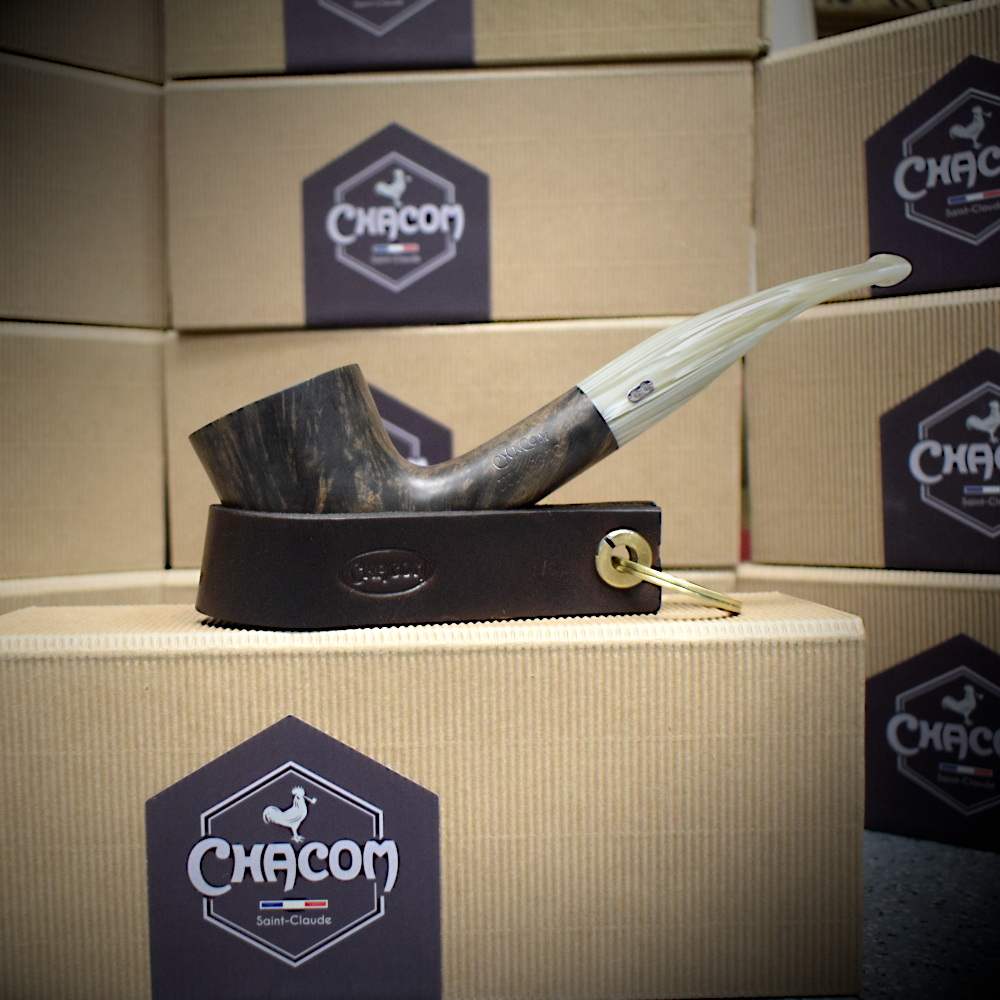 Chacom started all the way back in 1825 before the discovery of briar wood. The Comoy family were already making pipes out of boxwood; these pipes were manufactured in the small village of Avignon, near Saint-Claude. The target audience for these pipes were the “grumblers” of Napoleon's army. The discovery of briar wood in 1856 changed the game for pipe makers and the special treatment it required. Saint-Claude would become the birthplace of briar pipe manufacturing and known as the world capital of pipe-making.
Chacom started all the way back in 1825 before the discovery of briar wood. The Comoy family were already making pipes out of boxwood; these pipes were manufactured in the small village of Avignon, near Saint-Claude. The target audience for these pipes were the “grumblers” of Napoleon's army. The discovery of briar wood in 1856 changed the game for pipe makers and the special treatment it required. Saint-Claude would become the birthplace of briar pipe manufacturing and known as the world capital of pipe-making.
In 1870 Henri Comoy, who was a prisoner of war in Switzerland, met his cousins the Chapuis. Together they thought of the idea of an association and nine years later, Henri emigrated to London taking some of his technicians from Saint-Claude with him to establish the first English pipe factory - H. Comoy & Co LTD. The Saint-Claude factory still continued to supply them with briar wood and pipe bowls.
 In 1922, after the First World War, the association Comoy and Chapuis was recognised. The Saint-Claude factory became Chapuis Comoy & Cie. Henri died in 1924 leaving his sons Paul and Adrien to assume the direction of the factories with the assistance of their cousins Emile and Louis Chapuis.
In 1922, after the First World War, the association Comoy and Chapuis was recognised. The Saint-Claude factory became Chapuis Comoy & Cie. Henri died in 1924 leaving his sons Paul and Adrien to assume the direction of the factories with the assistance of their cousins Emile and Louis Chapuis.
By 1928 the factory in London was able to produce their own pipes. In order to develop the Saint-Claude factory, the brand Chacom was created and was exclusive to the french market until 1939.
In 1932 there was a world economic crisis, to weather this problem, Chapuis Comoy & Cie joined with another company called La Bruyere. This union created the biggest pipe concern in the world with a workforce of 450 skilled workers. Big trucks were needed to transfer the briar blacks from the drying shed to the factory.
After the second world war Chacom resumed its entire commercial library and launched a modern range of pipes. After a year Chacom became the number one brand in France and Belgium and by 1948 they were the biggest pipe maker in Scandinavia and Germany, their products were even reaching the United States.
 Due to Chacoms success by 1957 they separate from La Bruyere and return to the name of Chapuis Comoy & Cie. 1964 marked the death of Adrien Comoy, his son Pierre succeeded him in London and Mr Reed becomes Chairman and Managing Director in Saint-Claude.
Due to Chacoms success by 1957 they separate from La Bruyere and return to the name of Chapuis Comoy & Cie. 1964 marked the death of Adrien Comoy, his son Pierre succeeded him in London and Mr Reed becomes Chairman and Managing Director in Saint-Claude.
Come 1957 in face of the commercial preponderance of the brand, CHACOM the company La Bruyère returns to the name of CHAPUIS COMOY & Cie.
1964 marked the death of Adrien COMOY. His son Pierre went on to succeed his position at the London company. Meanwhile Mr Reed is the Chairman and Managing Director in Saint-Claude.
In 1978 Chacom employed Pierre Morel, an independent free-hand pipe maker who created a line of completely hand made pipes for them called the “Grand Cru” and a decade later he joined the team as a full-time pipe maker.
 Chacom were becoming even more popular and in 1997 they became the first French pipes to be exported to Russia and Eastern European countries and in 2002 Chacom was introduced to the Chinese market.
Chacom were becoming even more popular and in 1997 they became the first French pipes to be exported to Russia and Eastern European countries and in 2002 Chacom was introduced to the Chinese market.
In 2013 Chapuis-Comoy & Cie received the Entreprise du Patrimoine Vivant (EPV) label, this is a prestigious mark of recognition by the French State. It was created to reward French firms for the excellence of their traditional and industrial know-how. Then in 2016, after more than a century in Saint-Claude they made the tough but essential decision to leave their old factory.
Moving only a few miles away to Villard-Saint-Sauveur, the new factory is perfectly adapted for contemporary activity. Chacoms new ambition is to show the manufacturing of pipes using skills that have barely changed in almost two centuries. The new location has seen the opening of a store and a museum which mixes tradition and modernity, telling the story of an iconic name in the industry.
Written by Oliver Partington